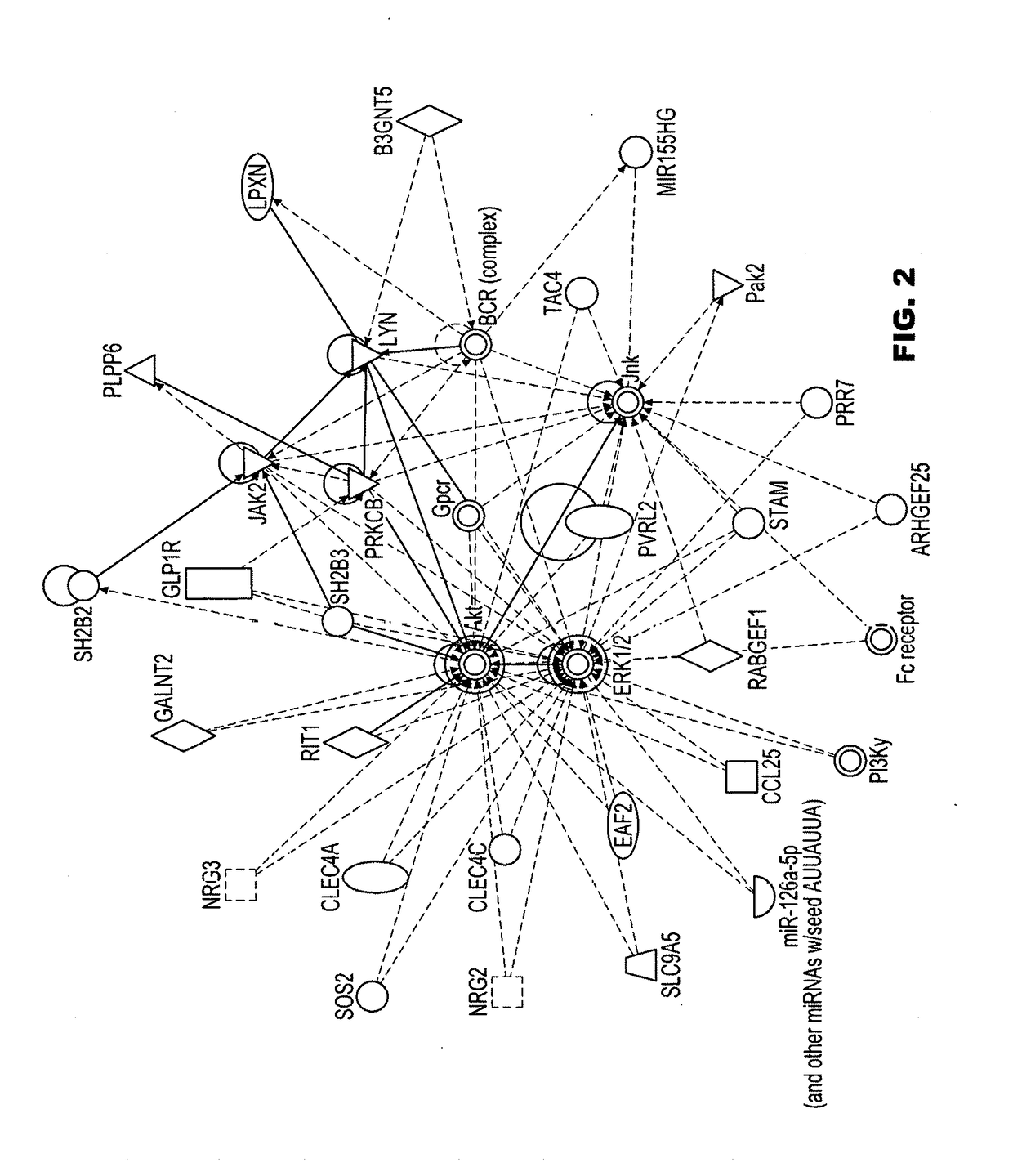Septic Shock Endotyping Strategy and Mortality Risk For Clinical Application
- Summary
- Abstract
- Description
- Claims
- Application Information
AI Technical Summary
Benefits of technology
Problems solved by technology
Method used
Image
Examples
example 1
Methods—Patient Endotyping Strategy
[0139]The methods used in examples 1-7 are summarized below:
Study Subjects.
[0140]A secondary analysis of previously published data [5] was conducted. The Institutional Review Boards of each of the 18 participating institutions approved the protocol for collection and use of biological specimens and clinical data. Children ≤10 years of age admitted to a pediatric intensive care unit (PICU) and meeting pediatric-specific consensus criteria for septic shock were eligible for enrollment [8]. There were no exclusion criteria, other than the inability to obtain informed consent, which was obtained from parents or legal guardians. The consent allows for secondary analyses.
[0141]Blood samples were obtained within 24 hours of meeting criteria for septic shock. Clinical and laboratory data were collected daily while in the PICU. Organ failure data were tracked up to day seven of septic shock using previously published criteria [8]. Mortality was tracked for ...
example 2
[0147]The clinical characteristics and demographics of the 300 subjects in the study cohort have been previously published [5]. There were 120 endotype A subjects (40%) and 180 endotype B subjects. FIG. 1 shows decision tree #1, derived from model #1, consisting of four genes: JAK2, PRKCB, SOS2, and LYN. Table 2 provides the annotations for the four genes in decision tree #1. The gene expression values are provided in arbitrary units of mRNA counts, as generated by the NanoString nCounter platform and normalized to four housekeeping genes. The root node provides the total number of subjects originally allocated to endotypes A and B, and their respective rates. Each daughter node provides the respective decision rule criterion based on a gene expression level, and the number of endotype A and B subjects, with the respective rates. Terminal nodes (TN) TN1, TN2, and TN4 contained subjects having a higher probability of being an endotype A (57.1 to 97.4%), whereas TN3, T...
example 3
Clinical Characteristics of the Endotypes After Reclassification
[0150]Although decision tree #1 correctly classified 91% of the subjects of the original 300 subjects, 19 subjects allocated to endotype A were originally endotype B, and seven subjects allocated to endotype B were originally endotype A. In previous studies using the 100-gene mosaics, endotype A subjects had worse outcomes compared to endotype B subjects, and prescription of corticosteroids was associated with increased risk of mortality among endotype A subjects [5]. Accordingly, it was determined if the classification based on decision tree #1 changed the previously observed differences between endotypes A and B, by combining the derivation and test cohorts (n=343), and the clinical characteristics of the endotype A and B subjects, as defined by decision tree #1, were compared. Consistent with the previous reports, endotype A subjects were younger, had a higher mortality rate, and had a higher rate of complicated cour...
PUM
| Property | Measurement | Unit |
|---|---|---|
| Time | aaaaa | aaaaa |
| Fraction | aaaaa | aaaaa |
| Fraction | aaaaa | aaaaa |
Abstract
Description
Claims
Application Information
 Login to View More
Login to View More - R&D
- Intellectual Property
- Life Sciences
- Materials
- Tech Scout
- Unparalleled Data Quality
- Higher Quality Content
- 60% Fewer Hallucinations
Browse by: Latest US Patents, China's latest patents, Technical Efficacy Thesaurus, Application Domain, Technology Topic, Popular Technical Reports.
© 2025 PatSnap. All rights reserved.Legal|Privacy policy|Modern Slavery Act Transparency Statement|Sitemap|About US| Contact US: help@patsnap.com



